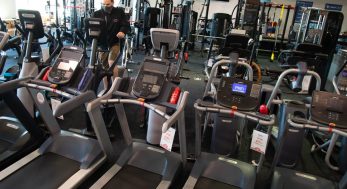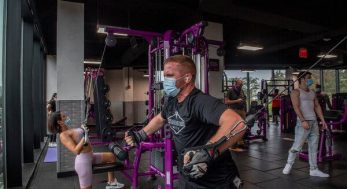
Besides functional fitness workouts, you should also regularly do moderate aerobic exercises, such as brisk walks. (iStock)
Consumer Reports has no financial relationship with any advertisers on this site.
Exercising regularly can improve your health and mood, but another key benefit is especially important as you get older. Certain workouts can make the activities of everyday life — walking up and down stairs, playing with kids, carrying groceries — easier. Experts call this functional fitness.
Workouts focused on functional training and balance also reduce the risk of falls, according to a recent review.
“The older we get, it really is the functional fitness that matters,” says David Marquez, an associate professor of kinesiology in the College of Applied Health Sciences at the University of Illinois at Chicago.
How do you know how functionally fit you are? Ask your doctor or trainer about the Senior Fitness Test, which can be done in 30 or 40 minutes. It involves simple activities that measure your strength, flexibility, balance, endurance and aerobic fitness.
“You can take these test items and actually turn them into exercises,” says Susan Kaplowitz, an assistant teaching professor of exercise gerontology at Rutgers University and the founder of the Rutgers Center for Exercise and Aging. Practicing them regularly can help make daily life easier.
What follows are four tests of key functional skills included in the Senior Fitness Test. Do them at least twice per week as part of a resistance-training plan, which typically uses weights to build strength and power. (That’s the ability to use strength with speed; for example, to help you catch yourself before a fall.) Talk to your doctor or practice with a trainer before trying these on your own.
●30-second sit-stand. See how many times you can stand up from a chair and sit back down in 30 seconds with your arms folded across your chest. (If needed, you can use your arms at first to help keep you steady as you build up strength.)
This is a test of lower-body strength and power, which is important for walking, climbing stairs and getting up safely.
●Arm curls. See how many times you can curl a light weight (five pounds for women, eight pounds for men) in 30 seconds. Try it first with your left arm, then your right. If you don’t have weights, you can practice with soup cans.
Arm curls test muscular endurance and upper-body strength, which is important for carrying heavy items such as groceries.
●8-foot get-up-and-go. Stand up from a chair, walk to an object you’ve placed eight feet away, go around it, then go back and sit down. As you practice — carefully — see whether you can do this more quickly.
This tests balance and agility, which are helpful when you need to, say, get to the phone quickly or answer the door.
●Back scratch. Reach your left arm over your left shoulder and the other behind your back. See how close you can bring your hands together. Repeat on the right side. You can improve your performance on the back scratch by holding a towel in one hand and pulling at it with the other gently. Don’t push too hard if this hurts.
This is a test of upper-body flexibility, which you use for activities such as brushing your hair and getting dressed.
Add aerobic exercise, too
While functional fitness training is key, the federal fitness guidelines also say that adults should get at least 150 minutes of moderate aerobic exercise per week or 30 minutes, five days per week.
You can achieve this goal by walking briskly enough to quicken your breathing and get your heart rate up. This will also help your gait speed, which helps you cross streets quickly, Marquez says.
To build lower body flexibility — another critical part of functional fitness — remember to stretch your hamstrings, which you can do before or after your walks.

